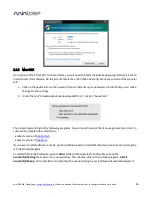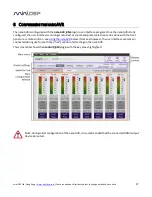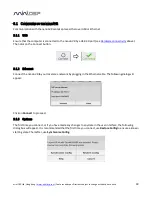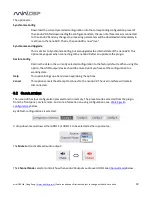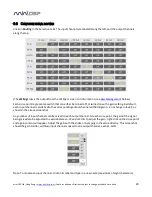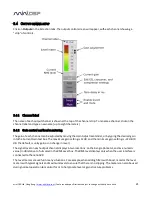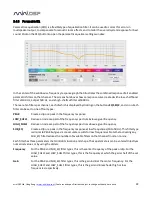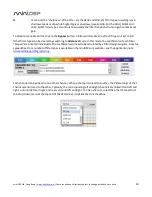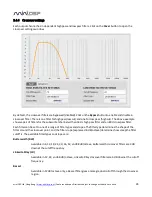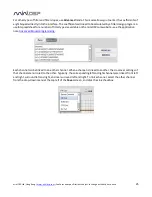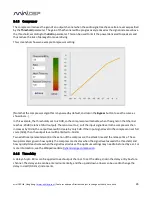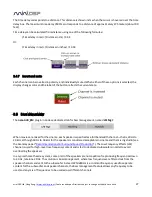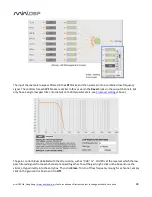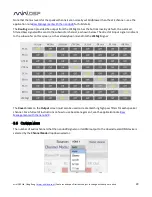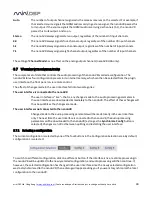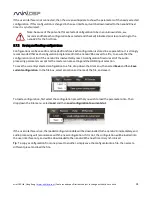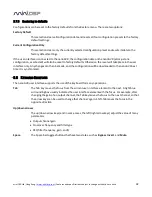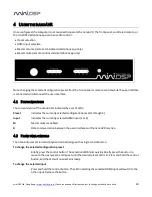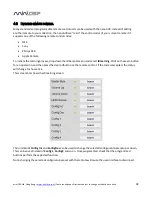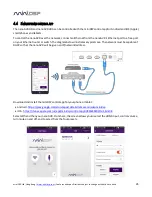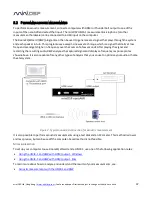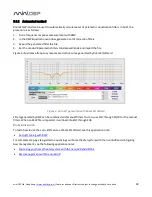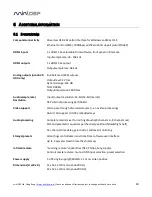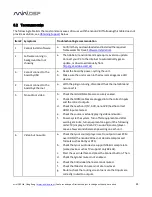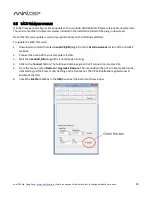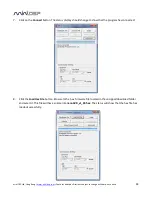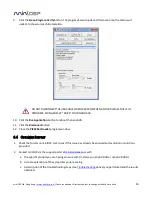
mi niDSP Ltd, Hong Kong /
/ Features and speci fi cations subject to change wi thout pri or noti ce
30
Auto
The number of output channels signaled is the same as receives on the selected. For example, if
the selected source signals that HDMI audio is carrying a stereo signal, the nanoAVR passes this
to its output. If the source signals that HDMI audio is carrying six channels (5.1), the nanoAVR
passes this to its output. And so on.
Stereo
The nanoAVR always signals stereo output, regardless of the number of input channels.
4.0
The nanoAVR always signals four-channel output, regardless of the number of input channels.
5.1
The nanoAVR always signals six-channel output, regardless of the number of input channels.
7.1
The nanoAVR always signals eight-channel output, regardless of the number of input channels.
The setting of
Channel Mode
has no effect on the analog output channels (nanoAVR HDA only).
3.7
W
ORKING WITH CONFIGURATIONS
The complete set of data that controls the audio processing of the nanoAVR is called a
configuration
. The
nanoAVR stores four configuration presets in its internal memory, which can then be selected from the plugin
user interface, the front panel or via remote control.
The effect of changes made in the user interface fall into two categories:
The user interface is connected to the nanoAVR
The user interface is “live” – that is, any changes made to the audio processing parameters in
the user interface are downloaded immediately to the nanoAVR. The effect of these changes will
thus be audible as the changes are made.
The user interface is
not
connected to the nanoAVR
Changes made to the audio processing parameters will be made locally in the user interface
only. The next time the user interface is connected to the nanoAVR, the audio processing
parameters will be downloaded to the nanoAVR (as long as the
Synchronize Config
button is
selected). Changes are not lost between quitting and restarting the user interface.
3.7.1
Selecting a configuration
The current configuration is selected by one of the four buttons in the Configuration Selection area. By default,
configuration 1 is selected:
To switch to a different configuration, click on a different button. If the interface is live, real-time processing in
the nanoAVR will be updated to the newly selected configuration, and audio processing will then continue. If,
however, the selected configuration has changed in the user interface since the newly selected configuration
was last synchronized to the nanoAVR, then a dialog will appear asking you if you want to synchronize the local
configuration to the nanoAVR.

